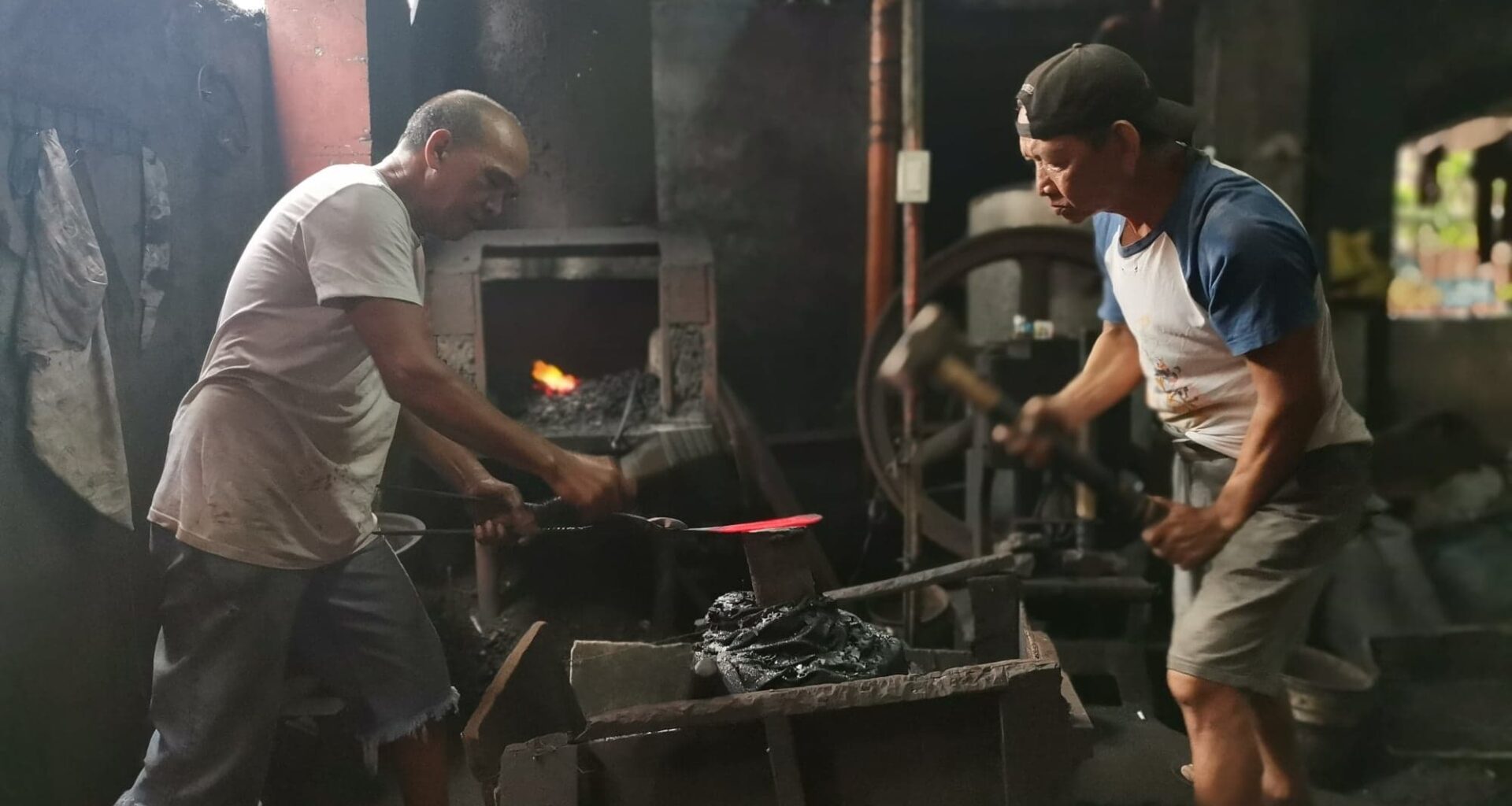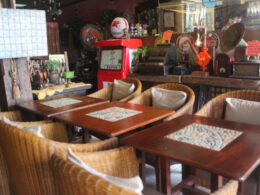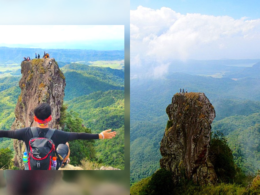The province of Cavite was once rich with a lot of skilled blacksmiths or pandays as they are called in Filipino. Making itak and bolo made for a good source of living during the 19th century because of the existing war against the Spaniards at that time.
In the municipality of Kawit in particular, it was believed that there were 45 blacksmith shops existing during the peak of revolution. These shops were responsible for making thousands of bolo and daggers used by revolutionaries in the early stage of revolt.
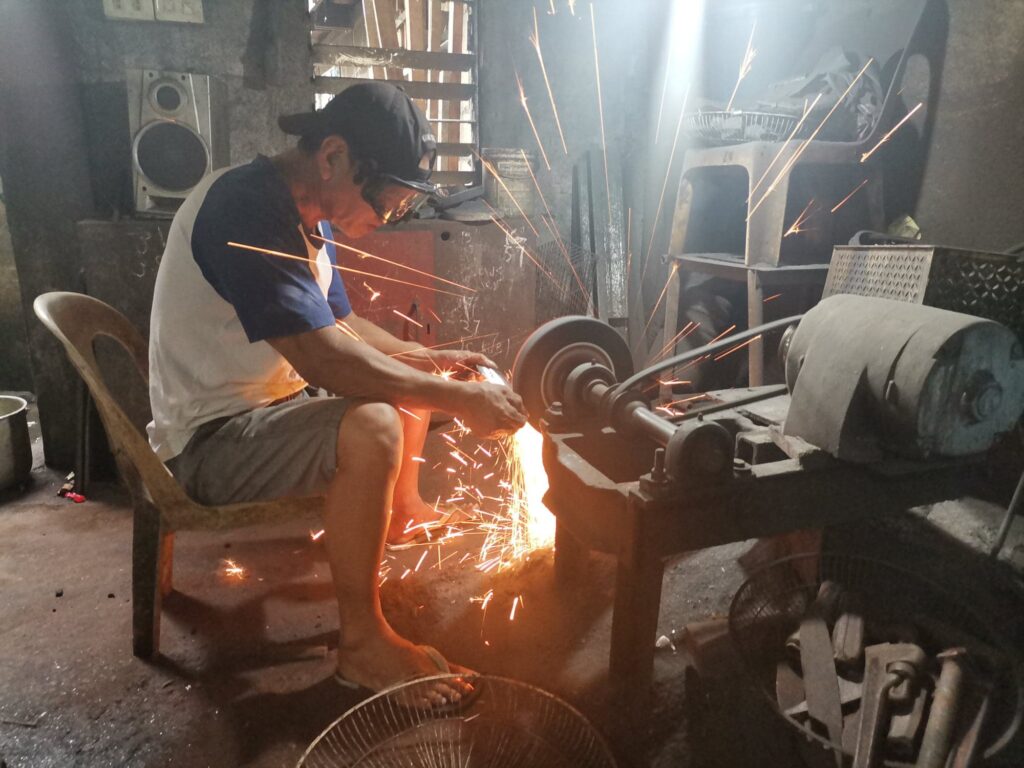
The concentration of blacksmiths was in Barangay Kaingen, a few meters away from the house of Emilio Aguinaldo.
Marissa Rentoria, 64, is currently one of the oldest pandayan shop owners in Kawit. She acquired this business from the ancestors of her husband, who were among the original blacksmiths in town. Their shop was supposedly established in 1898 and was handed down from generation to generation.
“Kumpare nila noon si Aguinaldo, yung ibang naka-display sa bahay niya [na mga itak at bolo], galing dito ‘yon. Kami ang may gawa no’n.” shared Nanay Marissa.
As we visited Nanay Marissa’s shop, she showed us the art of blacksmithing and showcased the traditional way of making such crafted weapons together with the oldest pandays in town.
There are a lot of blades this shop is making. Some of them are itak, panabas, kinabayo, kalawit, and palakol, among many others. All of these are now used for farms and productions.
Serelito Apolinario, 63, a panday for almost five decades now, said that there are several processes in making these weapons. The whole procedure begins by using dried coconut shells to make a fire.
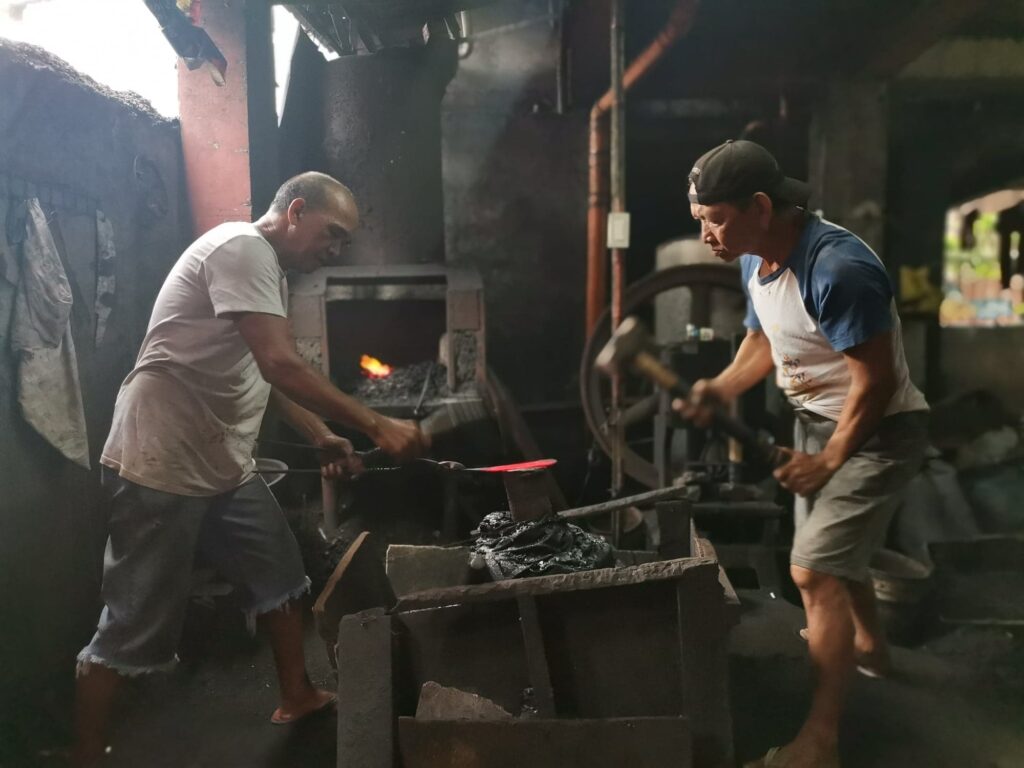
The metal is then placed inside a pugon until a certain temperature is reached. After that, the metal is taken out of the fire and placed in an anvil for shaping. The blacksmiths then bend and hammer the metal. When it cools down, it will be taken back to the flames and will undergo a similar process until the pandays are satisfied with its desired shape.
After this, the blade will undergo heat treatment. It will be soaked in a certain type of liquid required for steel. Its edges will then be sharpened with the use of abrasive wheels.
The blade will also undergo trademark stamping where the shop’s emblem will be engraved at one side of the blade. Then, they will attach its wooden handle that is usually made of ipil-ipil or guava trees to ensure best quality.
For the final step, the product will be polished one more time to rectify its blades.
“Kailangan dito matiyaga at masipag ka talaga dahil hindi madali ang pagpapanday,” Tatay Serelito shared about the craft.
Although saying that the whole process is tedious, Tatay Serelito is happy to still be doing what he does best for almost 50 years now.
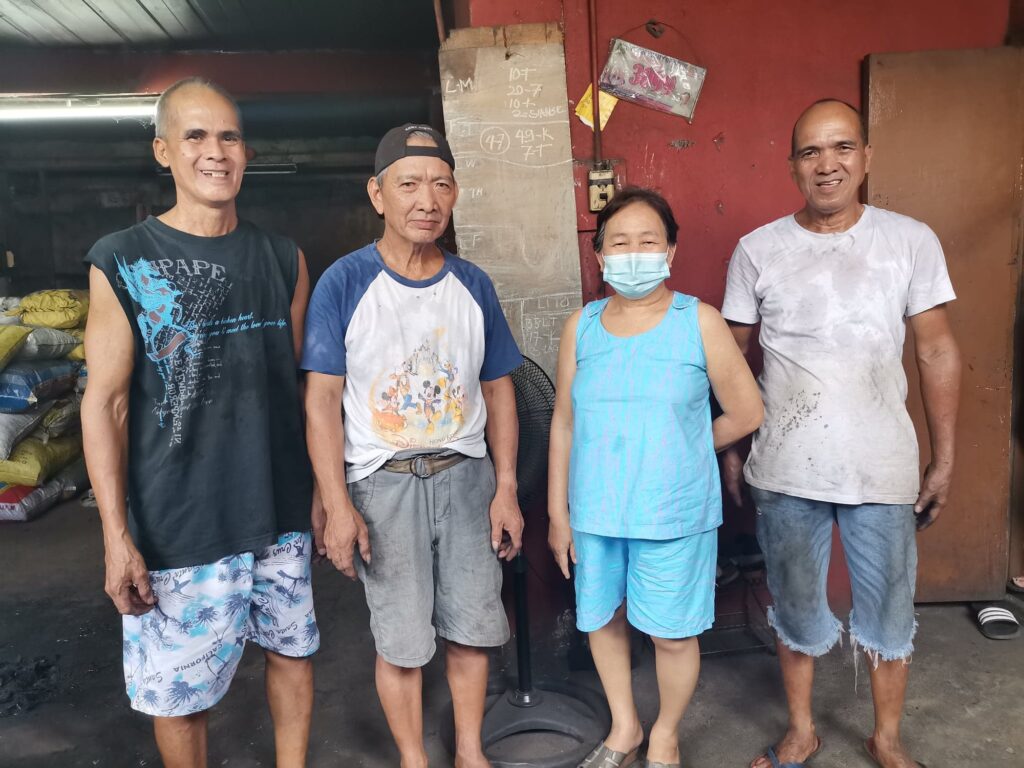
Despite this, he admitted that the coronavirus pandemic has greatly affected the industry.
“Humina talaga ang bentahan non. Wala kaming kita ng ilang buwan. Umaasa lang talaga kami sa ayuda,” he said.
As such, he and the others are just trying their best to cope with the situation in the hopes of fighting extinction.
Indeed, blacksmithing is not an easy occupation that is why there are only three families left in Kawit who still venture in this type of business. For them, blacksmithing is a noble job that gave their family a better life.





